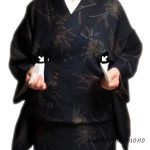How to put on kimono part 2 : from making ohashori to putting on datejime

The next step is how to make ohashori. Don’t forget to straighten the grain lines.
Practicing step by step and checking one by one are important for beginners.
So, let’s Enjoy kimono!
Learning target
- How to straighten ohashori
- How to close the collar
Click here if you want to review the part 1.
How to put on kimono : part 2
Make sure both ends of the collar
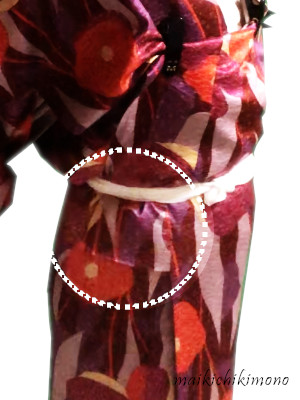
30. Check if the left end of the collar is firmly held by koshihimo.
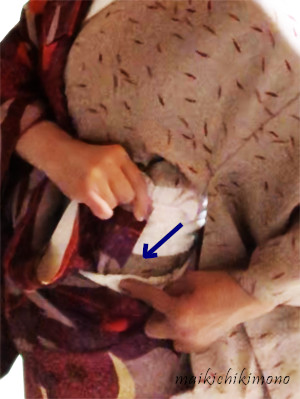
31. Pull out the right end of the collar above koshihimo so as not to get the lower skirt part loose.
The left end of the collar is on your right side and the right end of the collar is on your left side now.
Straighten ohashori

32. Put the hands inside the center of the back.
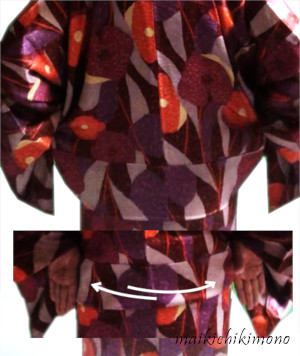
33. Slide the hands from the center to each side to make the tuck line sharp.
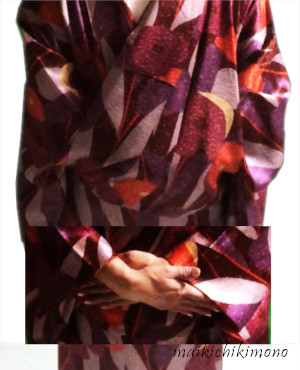
34. Put the left hand inside the right part from miyatsuguchi, an opening, and put the right hand inside the left part.

35. Slide the hands aside at the same time to make ohashori tuck line sharp.
Close the collar
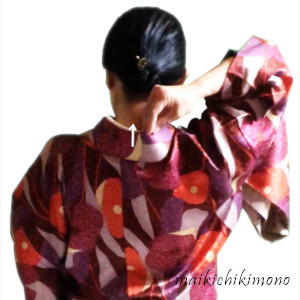
36. At the center of the back, make sure that haneri does not come out from the kimono.

 Remove the left shoulder from here and take a closer look at the procedure. Actually, I wear it like this picture.
Remove the left shoulder from here and take a closer look at the procedure. Actually, I wear it like this picture.
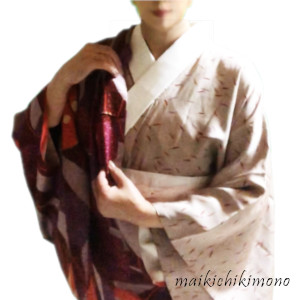
37. Fold the right collar 1/3 inside at kake-eri short line and straighten the folded line (grain line) with your fingers sliding.
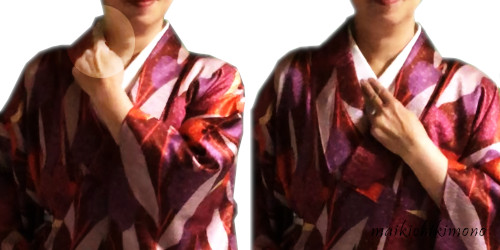
38. Adjust the width of haneri collar. Basically, take the width of one finger under your ear and the width of two fingers at the cross point of the collar.
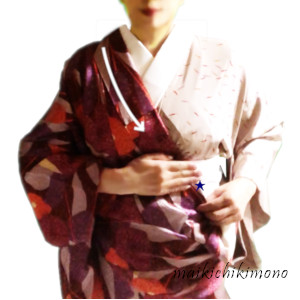
39. Slide the right hand along the collar and stop it under the breast.

40. Take a kimono belt. Hold the clip of the single layer side. If so, you can make fine adjustments even after attaching.

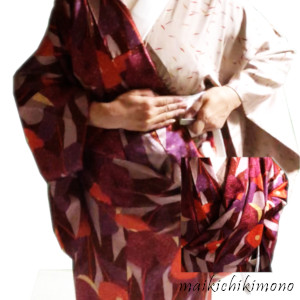
41. Insert the clip from miyatsuguchi or a side hole as shown in the small photo, and attach the clip at the position of the little finger. (★ in photo 39).
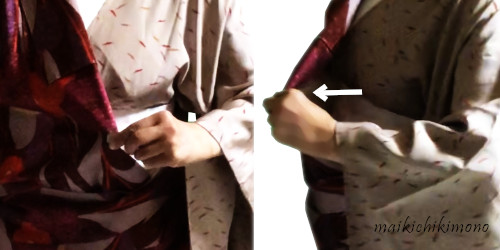
42. Move it forward horizontally. Please be sure to keep the width of haneri in 38.
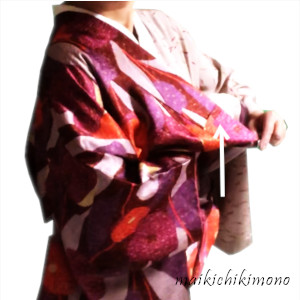
43. Tuck up all extra fabric neatly and make a triangle at the front.

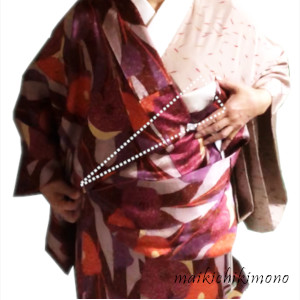
44. View after tucking. You have a triangle on the chest.
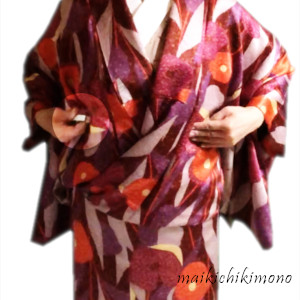
45. Wear the left shoulder from here. Bring the other clip to the front and temporarily attach it at the same height as the first clip.

46. Adjust the width of the left collar. Fold it 1/3 inside at kake-eri short line and straighten the folded line with your fingers sliding. Make sure the width of haneri collar. See the photo 38.


47. Take off the clip attached temporarily and reattach it in the exact opposite position of the first clip.
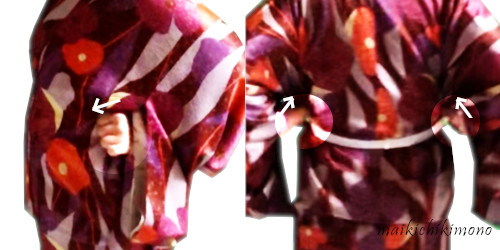
48. Remove wrinkles on the back. Push the back bodice at miyatsuguchi into the front bodice with both thumbs at the same time.
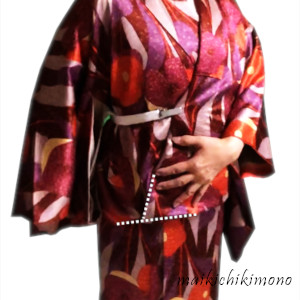
49. Match the front and rear ohashori tuck lines on the right side.
Wrap a datejime belt
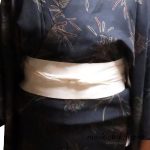
When you tie a traditional datejime, do the same thing as nagajuban. Please refer to How to put on nagajuban : one piece
There are two ways of wrapping datejime. One is mae-awase, closing at the front. Start from here.

50. Slide down the belt from the upper part of the chest to under the breast.
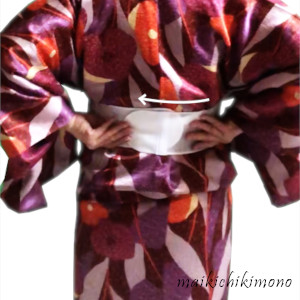
51. Wrap the belt, slightly stretch and close it.
The following is another way starting from putting datejime on the back.
- Put datejime on the back and bring the ends to the front stretching.
- Holding the right end, smooth wrinkle on your chest.
- Stretch the left end and close datejime.
Back to mae-awase.
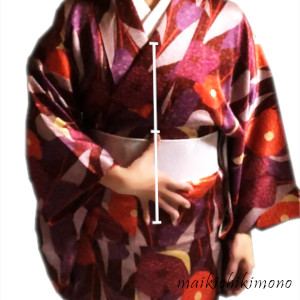
52. Check the ohashori length. Basically, two hand spans from the cross point of kimono is good.

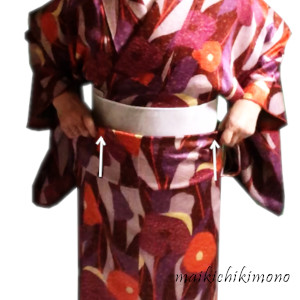
53. If you have long ohashori, tuck it into datejime to shorten the length by using your fingers.

54. Make sure that the seam on ohashori is connected to the seam on okumi, and also make sure the length of ohashori. Have a look at the white arrow. It is about an index finger length.
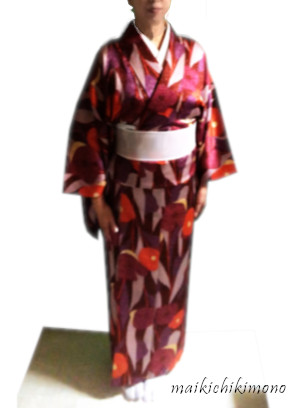
55. Finished!
You are ready to tie obi!
If you have a pad for obi called obimakura, let’s go to How to tie ichijudaiko.
If you don’t have obimakura, let’s go to How to tie tsunodashi.
